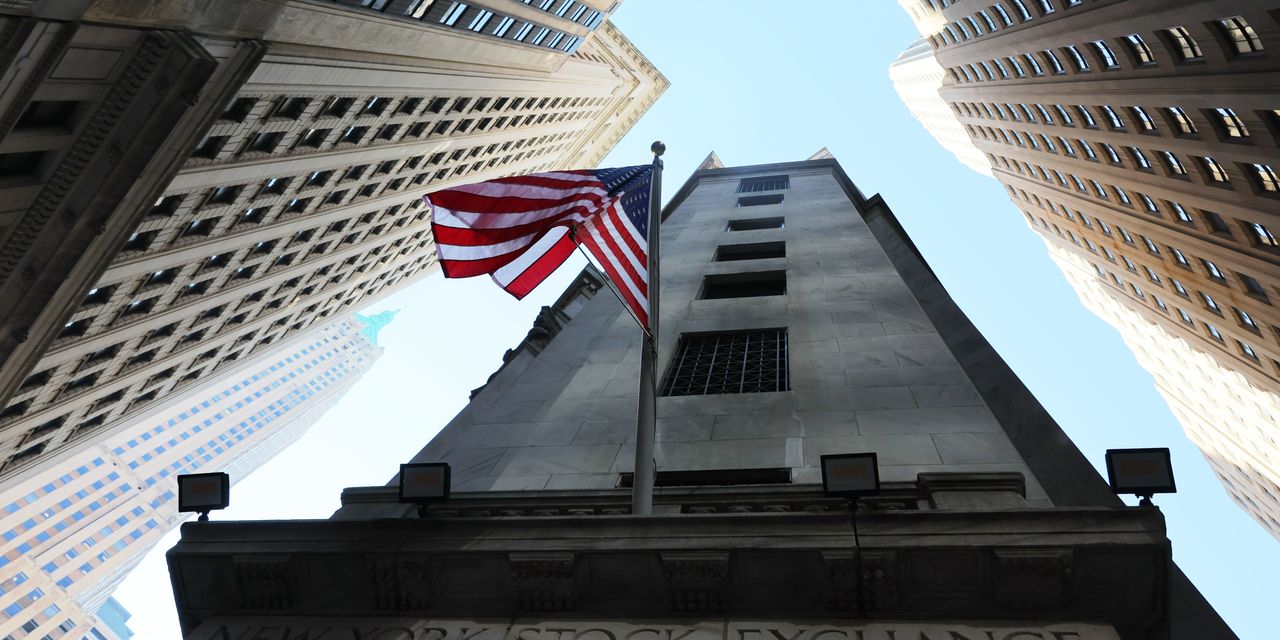U.S. stocks closed higher Tuesday, with the S&P 500 and Nasdaq Composite recording their longest win streaks in two years as oil prices retreated and investors weighed comments from Federal Reserve officials.
What happened
-
The Dow Jones Industrial Average
DJIA
rose 56.74 points or 0.2% to end at 34,152.60. It is the longest winning streak for the index since July 26, 2023 when it rose for 13 straight trading days. -
The S&P 500
SPX
gained 12.40 points or 0.3% to close at 4,378.38. It advanced for seven straight sessions, its longest win streak since Nov. 8, 2021. -
The Nasdaq Composite
COMP
advanced 121.08 points or 0.9% to finish at 13,639.86, securing its longest win streak since Nov. 8, 2021.
What drove markets
The extended bounce for equities comes after a three-month pullback that saw the S&P 500 and Nasdaq slip into a market correction — a decline of at least 10% from a recent high. But investor pessimism had been overdone, argued Solita Marcelli, chief investment officer for the Americas at UBS Global Wealth Management, in a note.
“While we see greater upside in the near term in fixed income, the return outlook for equities is positive, in our view. We believe the relatively benign backdrop for cash, fixed income, stocks, and alternatives makes this an opportune moment to add to diversified balanced portfolios,” she said.
Rising implied borrowing costs have been the primary driver of U.S. stocks of late. The 10-year Treasury yield
BX:TMUBMUSD10Y,
which hit a 16-year high above 5% late last month, but then briefly fell below 4.5% on Friday after cooling jobs data. After a bounce Monday it was trading Tuesday near 4.57%.
Oil prices fell back sharply on Tuesday, with the U.S. benchmark
CL.1,
dropping back below $80 a barrel to trade at its weakest level since August after China data raised demand concerns. Lower oil prices could help ease inflation worries, analysts said.
Some investors see the market getting ahead of itself once again when it comes to the potential for easing by the Federal Reserve.
The markets are building in four interest rate cuts next year, the first of which has been pushed forward to the May/June time period, said Kent Engelke, chief economic strategist at Capitol Securities Management.
“Numerous Fed officials — including FRB Chair Powell — are slated to speak in the next few days. It is generally assumed these speakers, may ‘push back’ on this emerging narrative that the Fed is done, and the first-rate cut will occur in June,” he said, in a note.
Late Monday, Minneapolis Fed President Neel Kashkari said Fed officials have not discussed what it would take to cut interest rates.
Investors were right to be wary about expressing overconfidence that the Fed would soon pivot to a more dovish stance, said Jim Reid, strategist at Deutsche Bank.
“[T]his is at least the 7th time this cycle where markets have reacted notably in response to dovish speculation. Clearly rates aren’t going to keep going up forever, but on the previous six occasions we saw hopes for near-term rate cuts dashed every time,” he said.
Fed Gov. Christopher Waller on Tuesday called the jump in the 10-year yield an “earthquake” in central banking terms, according to reports.
“His remarks need to be understood in context — they were not part of a policy discussion and would likely have been more hedged if they were,” said Krishna Guha, head of the global policy and central bank strategy team at Evercore ISI, in a note.
“But it still seems fair to take away the impression that the Fed is not taking the position that all the yield-driven tightening of financial conditions unwound last week. That feels risk-positive on net,” he wrote.
A slowdown in job creation in October was welcome news because it brought the labor market into “a more balanced” and sustainable growth, said Chicago Fed President Austan Goolsbee in a television interview.
The September U.S. trade deficit rose 4.9% to $61.5 billion. Meanwhile, the total consumer credit rose $9.1 billion in September, up from a $15.8 billion drop in the prior month, the Federal Reserve said Tuesday. That translates into a gain at a 2.2% annual rate, up from a 3.8% drop in the prior month. Economists had been expecting a $9.5 billion increase, according to the Wall Street Journal forecast.
Companies in focus
-
Uber Technologies Inc.
UBER,
+3.70%
topped earnings expectations but came shy of forecasts with its third-quarter revenue. Shares rose 3.7%. -
Shares of Datadog Inc.
DDOG,
+28.47%
closed up 28.5% after an upbeat earnings forecast. Shares of MongoDB Inc.
MDB,
+11.04%
and Elastic NV
ESTC,
+6.53%
were also rallying as the results eased fears about consumption-based software companies for the latest quarter. -
D.R. Horton Inc.
DHI,
+2.93%
shares rose 2.9% after the home builder’s fiscal fourth-quarter results beat Wall Street analyst estimates for profit and revenue.
Read the full article here


